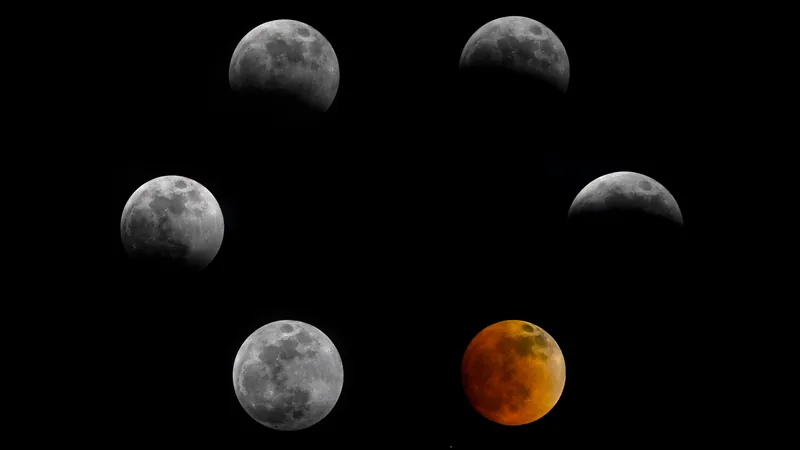
Get Ready for the Spectacular Blood Moon Total Lunar Eclipse on September 7-8!
2025-09-06
Author: Siti
Mark Your Calendars!
Want to witness a breathtaking cosmic spectacle? Look to the skies on September 7-8, when a total lunar eclipse will paint the moon a deep, mesmerizing red—a phenomenon often dubbed the "blood moon." Here’s everything you need to know to catch each dazzling phase of this celestial occurrence.
What is a Total Lunar Eclipse?
A total lunar eclipse takes place when Earth positions itself directly between the moon and the sun, casting a shadow over our lunar companion. This shadowing effect causes the moon to glow in a rich red hue, as the light from sunrises and sunsets on Earth is refracted and scattered onto its surface.
Where and When to See It
The total lunar eclipse will be fully visible from large parts of Asia, western Australia, and eastern Europe. However, places like Spain and Norway will see only a partial eclipse. Be sure to check the timings specific to your location!
Viewing Tips
Good news! You can safely observe the lunar eclipse without the need for special glasses or filters—your naked eye, binoculars, or a telescope will do just fine. If you can’t step outside for the event, numerous free livestreams will let you watch the blood moon unfold.
Phases of the Eclipse
Here's a breakdown of what to expect during each phase of the eclipse: 1. **Entering the Penumbra:** At 11:28 a.m. EDT (1528 GMT) on September 7, the moon will start to slip into Earth's penumbra, the outer shadow. This phase initiates subtle darkening on the upper left of the lunar disk. 2. **Into the Umbra:** By 12:27 p.m. EDT (1627 GMT), the moon will enter the umbra, the darker core of Earth’s shadow. This marks a more pronounced darkening as Earth's shadow consumes the lunar surface rapidly, giving way to a deep red-brown tint as three-quarters of the moon covers in shadow. 3. **Totality:** The climax occurs at 1:30 p.m. EDT (1730 GMT), when the entire lunar disk is engulfed in the umbra, transforming it into a stunning blood moon! Totality will last around 82 minutes, with the peak eclipse at 2:11 a.m. EDT (1811 GMT). During this time, different hues can emerge, influenced by Earth’s atmospheric conditions. 4. **Eclipse Winding Down:** At 2:52 p.m. EDT (1852 GMT), the umbra will begin to recede, revealing a crescent of light returning to the moon's surface, leading to the end of the eclipse by around 4:55 p.m. EDT (2055 GMT).
What's Next?
After this mesmerizing blood moon, don't miss out on a partial solar eclipse set for September 21, visible from southern Australia, several Pacific islands, and Antarctica. Keep your eyes on the skies—they're full of surprises!



 Brasil (PT)
Brasil (PT)
 Canada (EN)
Canada (EN)
 Chile (ES)
Chile (ES)
 Česko (CS)
Česko (CS)
 대한민국 (KO)
대한민국 (KO)
 España (ES)
España (ES)
 France (FR)
France (FR)
 Hong Kong (EN)
Hong Kong (EN)
 Italia (IT)
Italia (IT)
 日本 (JA)
日本 (JA)
 Magyarország (HU)
Magyarország (HU)
 Norge (NO)
Norge (NO)
 Polska (PL)
Polska (PL)
 Schweiz (DE)
Schweiz (DE)
 Singapore (EN)
Singapore (EN)
 Sverige (SV)
Sverige (SV)
 Suomi (FI)
Suomi (FI)
 Türkiye (TR)
Türkiye (TR)
 الإمارات العربية المتحدة (AR)
الإمارات العربية المتحدة (AR)